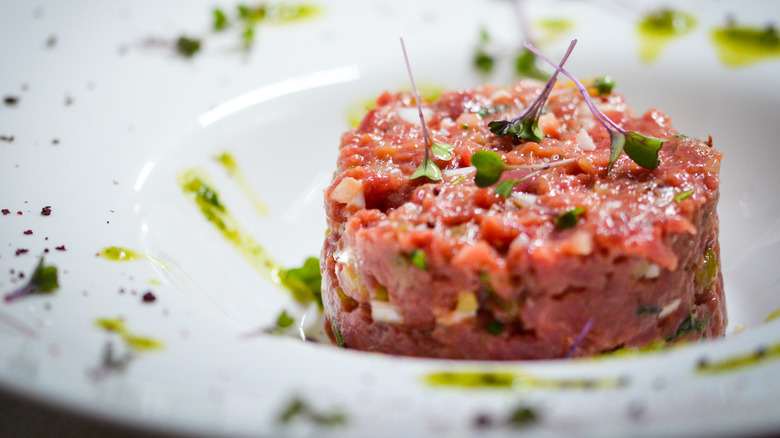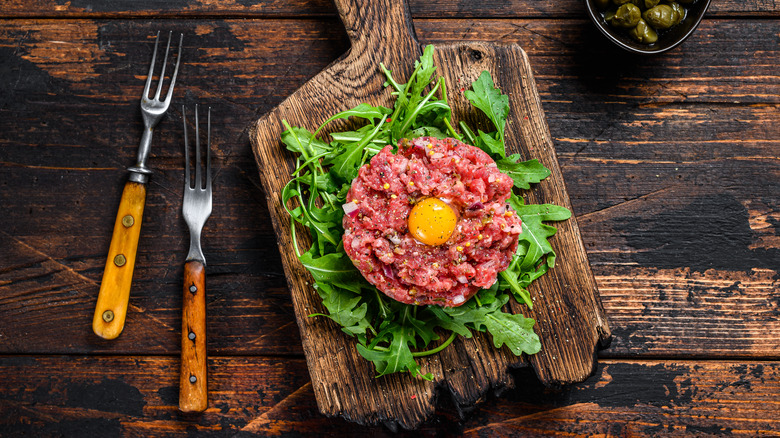The Sustainable Reason Restaurant Chefs Love Steak Tartare
If you want to impress your dining companion at a high-end eating establishment, toss out the words "steak tartare." It's a French dish that took root with U.S. foodies during the late 1800s, says MasterClass. Around that time, the Italian raw beef carpaccio started gaining popularity in the states, and in Paris steak tartare was being served as "steak à l'Americaine." Today, you'd be hard-pressed to find a French café, trendy all-day brunch spot, or fancy restaurant that doesn't serve steak tartare.
To make it, raw steak is finely chopped and combined with whatever ingredients the chef prefers. These can include mustard seeds, diced onion, plums, chopped nuts, shallots, truffles, Worcestershire sauce, crushed anchovies, and parsley, among others. Alton Brown uses salty capers and chopped fresh celery leaves in his version, per Food Network. The biggest limitation here is a cook's imagination. You simply chop up the ingredients like you might prepare a salad, and it all gets adhered together by raw egg yolk.
With such an exotic-sounding name like "steak tartare," you'd probably expect the dish to carry a lofty price tag to match. In December 2022, AgriLife Today reported that the price of beef is higher than it's been in decades due to inflation. Plus, considering steak tartare resides on the menus of some of the fanciest restaurants in the world, it must be a costly dish for restaurants to make ... right? Think again. Believe it or not, there's a sustainable reason why chefs love steak tartare.
Steak tartare prevents waste
It may be a delicious appetizer, but steak tartare is also a wicked smart economical move for restaurants. Chef Jesus "Chuy" Cervantes of Torst Bar in Brooklyn, NYC says restaurants serve steak tartare to "use up the scraps" of larger steak entrée dishes, via Food & Wine.
Adding steak tartare to the menu is a thrifty industry secret employed by smaller restaurants as well as some of the most prestigious establishments in the fine dining world. For instance, Amélie in Manhattan's Upper West Side has been recognized by Michelin Guide every year since opening in 2017, and it serves a killer tartare.
As varied and customizable as steak tartare can be, its range is also wide enough to encompass a pretty substantial margin of error. In "Les Halles Cookbook," Anthony Bourdain says good steak tartare is all about "fresh beef, freshly hand-chopped at the very last minute and mixed tableside," via Bloomberg. "Do not dare use a food processor on this dish — you'll utterly destroy it." Three-Michelin starred chef Christopher Kostow agrees. "It's on so many menus, and I can count on one hand the number of great tartares I've had," the chef told Robb Report.

